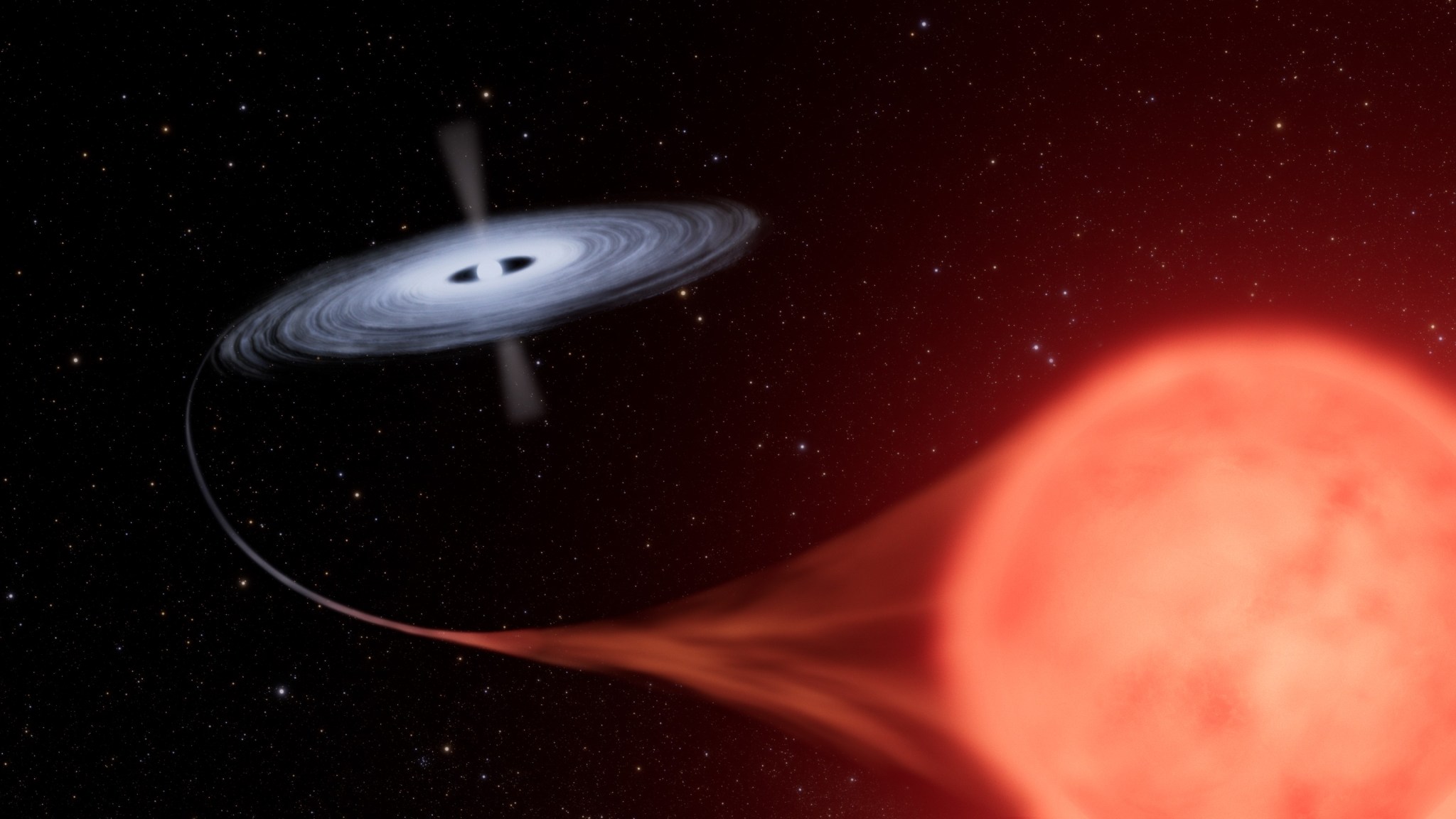4 min read

Astronomers have used new data from NASA's Hubble Space Telescope and the retired SOFIA (Stratospheric Observatory for Infrared Astronomy) as well as archival data from other missions to revisit one of the strangest binary star systems in our galaxy - 40 years after it burst onto the scene as a bright and long-lived nova. A nova is a star that suddenly increases its brightness tremendously and then fades away to its former obscurity, usually in a few months or years.
Between April and September 1975, the binary system HM Sagittae (HM Sge) grew 250 times brighter. Even more unusual, it did not rapidly fade away as novae commonly do, but has maintained its luminosity for decades. Recently, observations show that the system has gotten hotter, but paradoxically faded a little.
HM Sge is a particular kind of symbiotic star where a white dwarf and a bloated, dust-producing giant companion star are in an eccentric orbit around each other, and the white dwarf ingests gas flowing from the giant star. That gas forms a blazing hot disk around the white dwarf, which can unpredictably undergo a spontaneous thermonuclear explosion as the infall of hydrogen from the giant grows denser on the surface until it reaches a tipping point. These fireworks between companion stars fascinate astronomers by yielding insights into the physics and dynamics of stellar evolution in binary systems.






